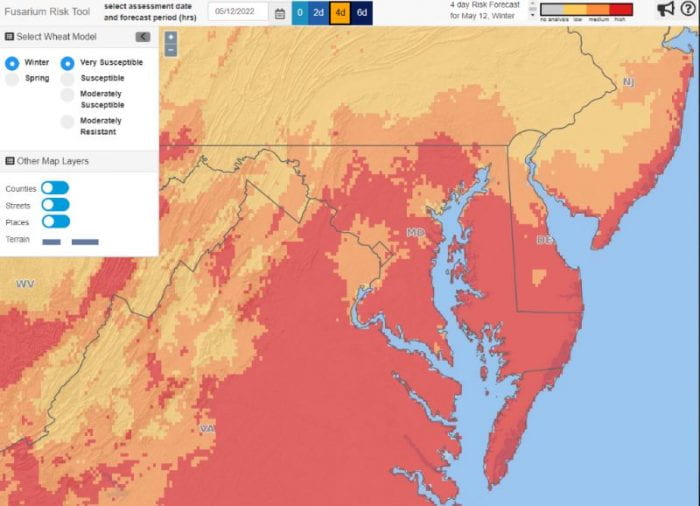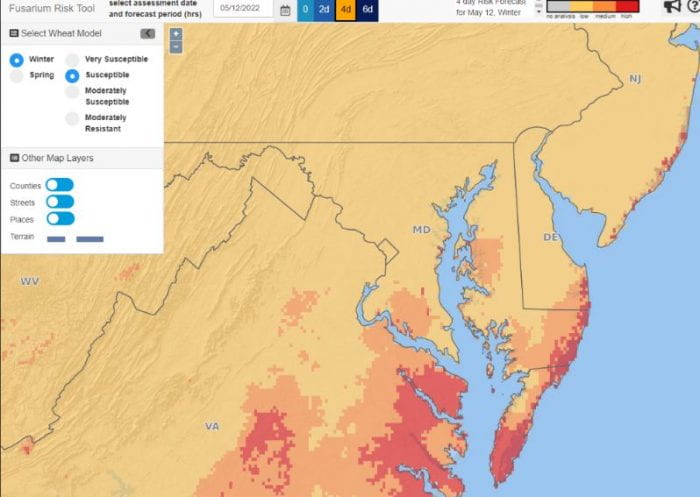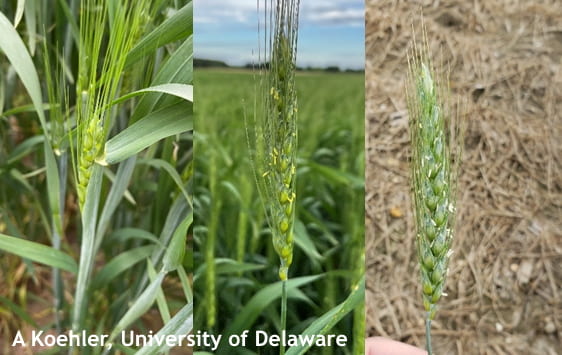Alyssa Koehler, Extension Field Crops Pathologist; akoehler@udel.edu
Weather conditions have continued to be more interesting than we would have liked over the past week. Most fields in the region are heading and at or near flowering. Last weekend’s wet weather and the rains this week have bumped our FHB risk, particularly for very susceptible hybrids. I have included the 4-day projection of risk for very susceptible (Figure 1), Susceptible (Figure 2), and Moderately Susceptible (Figure 3). As these models show, starting with host resistance is a great first line of defense. If planning for fungicide applications, yellow anthers in the center of the wheat head are the signal that you have reached Feekes 10.5.1. Once around 50% of heads are flowering, fungicides are most effective when applied within a 4-5 day window. Anthers can remain attached after flowering, but become a pale white (Figure 4). Fungicide products should be applied at the manufacturers recommended rate with nozzles that are angled 30-45° from horizontal (30 degrees is better than 45). Nozzles angled both forward and backward or twinjet nozzles that spray in two directions give better contact with the head and increase fungicide efficacy. For ground sprays, fungicides should be applied in at least 10-15 gallons of water per acre; aerial applications are recommended at 5 gallons per acre.

Figure 1. FHB Risk Model for May 12, 2022 using the 4 day outlook for winter wheat rated as very susceptible to FHB from: wheatscab.psu.edu.

Figure 2. FHB Risk Model for May 12, 2022 using the 4 day outlook for winter wheat rated susceptible to FHB from: wheatscab.psu.edu

Figure 3. FHB Risk Model for May 12, 2022 using the 4 day outlook for winter wheat rated moderately susceptible to FHB from: wheatscab.psu.edu

Figure 4. From left to right Feekes 10.3, Anthesis, Feekes 10.5.1 (yellow anthers beginning flowering), 4 days after anthesis (white anthers post flowering).
